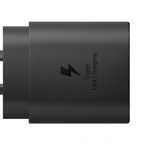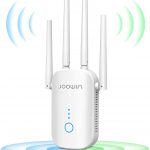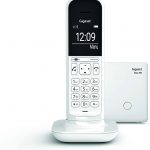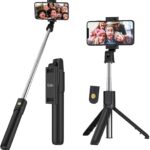Not all houses, offices, and general spaces are the same size. It is common that a good router can make its WiFi signal reach any corner of a medium-sized space, but it is not the same if it is large or simply has an elongated design. In these cases, what can I do so that the signal reaches all the rooms? There are different solutions, and one of them is to use a WIFI repeater that will allow us to connect to the internet without cables regardless of where we are.
Best WiFi repeaters
| The best |

|
TP-Link RE330 WiFi... | See features | 12.000 reviews | View deals |
| Price quality |

|
TP-Link RE190 AC750-... | See features | 30.832 reviews | View deals |
| Our favorite |

|
TP-Link N300 Tl-WA850RE-... | See features | 183.816 reviews | View deals |

|
MERCUSYS ME10 Repeater... | See features | 3.507 reviews | View deals | |
![[2024 New] Mercusys...](https://m.media-amazon.com/images/I/41rBm6ag8DL.jpg)
|
[2024 New] Mercusys... | See features | 119 reviews | View deals | |

|
MERCUSYS - ME30 AC1200... | See features | 2.545 reviews | View deals |
TP-Link RE450
TP-Link is a safe bet. They have a long history in the WiFi world, and their routers and repeaters are among the most popular on the market. This RE450 has everything we could need, starting with three antennas which will cause the signal to be precisely extended to more directions.
No products found.
As for other specifications, we have to support both 2.4GHz and 5GHz, so we can enjoy 450Mbps at a longer distance or up to 1750Mbps in short distances and without many walls in between. In addition, it includes an Ethernet port that can be used to connect it to a router if it does not have WiFi or its range / speed is not good or connect a computer directly to the repeater.
Victure 1200Mbps WiFi Repeater
A cheaper option is this from Vincture. Offers speeds up to 1200Mbps, and it has two steerable antennas to be able to point where we are most interested, or to separate them and make the signal wider. Like almost any WiFi device that boasts nowadays, it is compatible with the 2.4GHz and 5GHz frequencies, which translates into good range and good speed, although we have to change the frequency according to what interests us at all times.
No products found.
It is still important, especially for the less expert, which includes a WPS button It is used to configure the repeater in a faster way. And it also has an Ethernet port to connect it directly to the router or connect a device to the repeater.
Xiaomi Mi Repeater
Xiaomi has been doing things well for a long time, and it is not surprising that there is a repeater of this brand on this list. What yes it surprises is its priceAs it costs a fifth of what other repeaters cost, but it is not so surprising when we remember that Xiaomi has always offered products with good value for money.
This Xiaomi repeater is a very simple one, but that does not mean that it is not worth it. It offers a dual band, which means that it supports the frequencies of 2.4GHz and 5GHz, and a 1733Mbps maximum speed, as long as we use the best configuration and we are close to the router.
TP-Link TL-WPA4220T Extender Kit
Although it is on this list, this from TP-Link is not a conventional repeater. Actually, what we have here is a extender kit, and we all know that a kit includes several components. The TL-WPA4220T includes a total of three devices that can be connected together so that the signal goes as far as we could never have imagined.
This extender is not designed to offer the highest speeds, since it has stayed in the 2.4GHz frequency, which is not as fast as 5GHz. But that's not the reason for this extender. It is designed to offer 600Mbps speeds anywhere in our home or office, for which it uses PLC and is easy to assemble, since we only have to connect it and press a button to configure it.
Yaasier WiFi Repeaters, 1200Mbps
This repeater from Yasier offers speeds up to 1200Mbps, something that we can enjoy if we connect to its 5GHz frequency and are close to it. It also supports the 2.4GHz frequency, which means that we can connect to the repeater even if we are a little further away and there are walls in between.
The company highlights two things about this product: we can connect up to 20 devices to its WiFi network, so it will be rare for someone to be orphaned or the connection drops due to excesses. It also highlights that does not have an ethernet port, but 2, which allows you to connect to the router or we can connect up to two devices to it so that neither of them depends on the WiFi signal.
What is a WiFi repeater

WiFi signals lose power and speed when we move away from the router. Therefore, if we are in a house of about 20m long with intermediate walls, it is likely that the signal will not be able to reach the other end. A WiFi repeater is a appliance that is designed to collect and extend the signal from the router.
The idea is this: let's say we have the router at one end of a house, office, etc., and that the WiFi signal does not arrive or it goes too loose to the other end. Assuming half the power / speed is lost midway, we can put a WiFi repeater at that point to make about 50% go to the furthest point. It is important to mention that the percentage is mentioned as a guide, and that the important thing is to know that the repeater will pick up the signal and make it go further.
How it is used
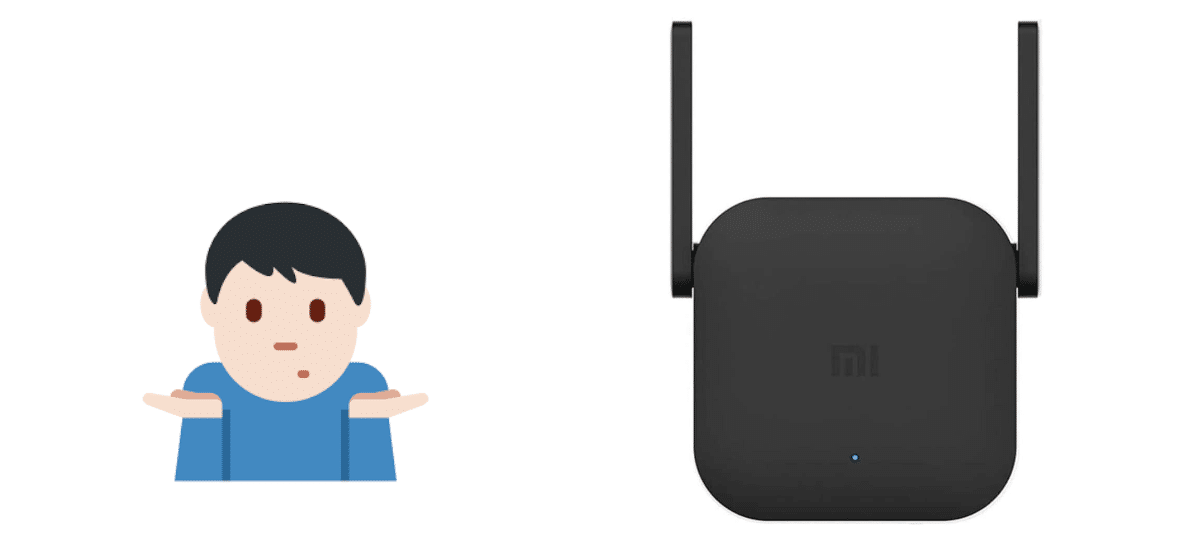
Each WiFi repeater must include in the box the instructions that will tell us how to make it work. What we will find in them, above all, is the name of the access point, its IP and others, but to configure a WiFi repeater it is usually necessary to follow steps such as the following:
- We open the box and check that it includes everything it should include, such as the device and documentation.
- We connect the repeater to the power outlet.
- We connect the repeater to a computer with the network cable.
- From here, we have to follow the manufacturer's instructions, but basically, in this step we have to access the repeater's address to be able to enter its settings. That address can be a number such as 192.168.0.1, or any other that is indicated in the instructions.
- Following what the instructions indicate, or our intuition if we have already entered similar panels in the past, we have to go to the section where the available networks are displayed. In it, we can probably add the name of the network and the password if we have it in hidden mode.
- Next we choose the main network and connect to it.
- As an optional step, we can configure a name for the repeater. For example, if the router's network is WiFi1, we can put WiFi2 on it. In this way, we can ensure that at a point far from the router we will always connect to the repeater, which will make the signal and speed higher. Otherwise, there is always the possibility that we connect to WiFi1 and the signal and speed are almost non-existent.
- Now we disconnect the repeater from the PC and the network socket.
- Finally, we put the repeater in an intermediate area that allows it to collect the signal from the router and make it reach the point that interests us.
It seems important to take into account one detail: the kitchens. They, where there are so many appliances such as electronic stoves, refrigerators, microwaves and others, act as a black hole of radio frequencies that can cause the signal to be lost, so much so that many telephones lose coverage in the kitchen. If we can, we have to avoid them, or try to put the repeater in the point where the WiFi signal is least affected (one room before, one after or in the same kitchen).
How to choose a WiFi repeater
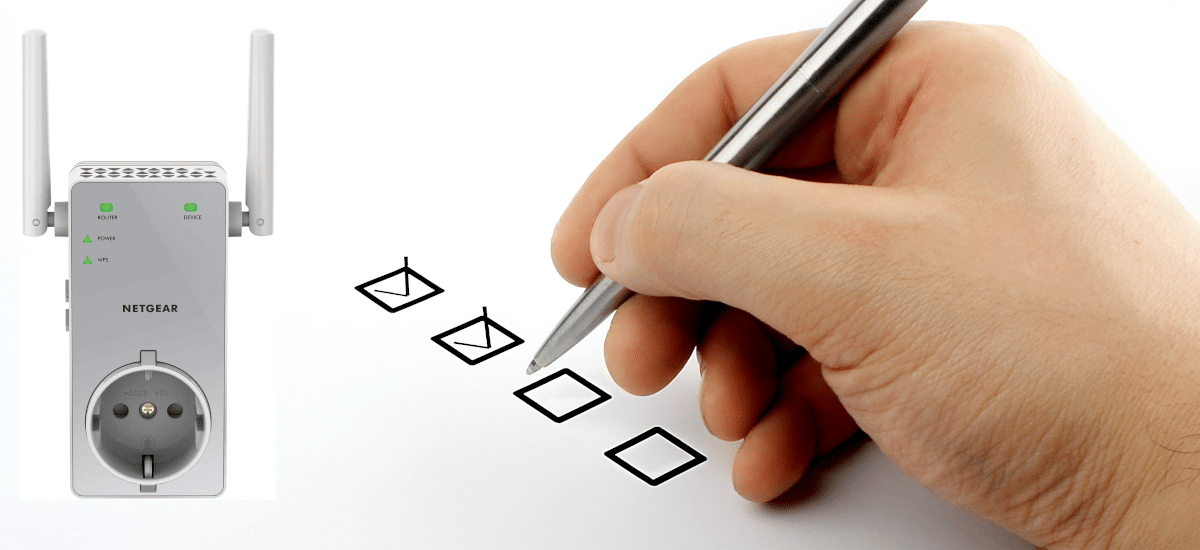
Scope
The range of the repeater is one of the most important points to consider. We can buy the best we can see, but if it's designed to go a long way and we don't need as much power, we're literally wasting money. A WiFi repeater can be used for distances of about 20m with walls or up to hundreds of meters without walls. We are the ones who have to know where we are going to use it in order to decide what distance we need and what we will explain in the next point.
Network type
The type of network is also important. Do not confuse the type of network with its encryption (WEP and WPA, for example). There are different types, such as the following:
- 802.11: it usually offers a speed of 1Mbit / s, although the theoretical one is 2Mbit / s. The frequency is 2.4GHa and reaches up to 330m.
- 802.11a: the speed it usually reaches is 22Mbit / s, although in theory it should offer up to 54Mbit / s. The frequency is 5GHz and can reach 390m.
- 802.11b: usually reaches 6Mbit / s, although the theoretical speed is 11Mbit / s. The frequency is 2.4GHz and it can reach 460m.
- 802.11g: the speed it usually offers is 22Mbit / s, but the theoretical one is 54Mbit / s. The frequency is 2.4GHz and it can reach 460m.
- 802.11n: the speed that it usually offers is 10Mbit / s, but the theoretical one is 600Mbit / s. It combines 2.4GHz and 5GHz frequencies and can reach 820m.
- 802.11ac: it usually offers about 100Mbit / s, but the theoretical speed is 6.93Gbps. The frequency is 5.4GHz and goes up to about 300m.
- 802.11ad: it usually offers a speed of 6Gbit / s, but the theoretical speed is 7.13Gbps. The frequency is 60GHz and goes up to 300m.
- 802.11ah: it reaches up to 1000m, with a low frequency that makes it reach practically any point, but not at the best speed.
As you have seen, we have talked about theoretical and practical speed, and this is because WiFi is not an exact science today. It will depend on many factors, and the best speeds will be obtained with a good target equipment (mobile, tablet, PC…) right next to the router, and even so it is difficult for us to achieve the maximum of the theoretical speed.
Personally, a data that seems important to me to explain is the frequencies, especially the 2.4GHz and 5GHz. The former are designed to go further and get through walls well, but the speed is nowhere near the maximum. The second is much faster, but to take advantage of the maximum speed we have to be close to the router and without walls in between. For this reason, it seems important to me to get a router or repeater compatible with, at least, those two frequencies, since with the first we can connect from further away from the router and with the second we can navigate faster if we are in the same room.
Speed
As we have explained in the previous point, each type of WiFi network has some properties, and we must know what interests us. That which we have explained in the scope section that if we buy something we don't need we will lose moneyWe can also apply it to speed, and this is easy to understand: why are we going to buy a WiFi repeater that offers us a speed of 1000Mbit / s if our router only offers 300Mbit / s and we have contracted 100Mbit / s?
But here I have to say be careful, that we analyze the situation: is it possible that in the future we will hire more speed and change the router to a more powerful one? If the answer is yes, maybe it is worth buying a repeater of the fastest, for what may happen in the future.
Trademarks
A maxim in economics is that cheap is expensive. Ok, it is true that it is not always fulfilled, and that we can buy something very cheap that perfectly fulfills its mission for a long time, but it is not the usual thing. For that reason, it is often worth it acquire something with a certain fame, since this fame will have been achieved after launching dozens of good quality products.
I think it is not worth buying a cheap WiFi repeater that we find through Amazon or any specialized store (or not), and personally I would recommend any of the following:
- D Link.
- Netgear.
- ASUS.
- Tp link.
Previous they are a safe bet, and offer devices for all types of users and their needs. There are other brands that are gaining fame, but the previous ones have been around for decades and I think they are the first that we should analyze.



